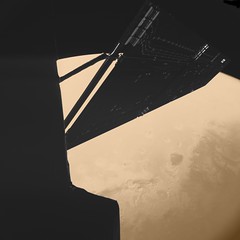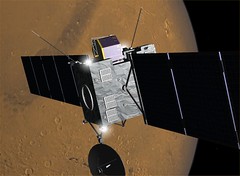 The European Pégase CTV I mentioned the other day is (strictly speaking) an invention of its Orbiter add-on developers, although it has some plausible roots and does have the virtue that it assumes a launch vehicle that has actually flown (the Ariane 5). On the other hand, the Orion CEV is real, at least in the sense that some contracts have been issued as part of NASA's Project Constellation (although its assumed launch vehicle does not yet exist). When Orion will fly and in exactly what form remain to be seen, but if all goes well, there will be a NASA crew vehicle to service the ISS and perform other Earth-orbital duties starting around 2014. There may also be some private competition for the same basic job (if all goes well for some of the private companies).
The European Pégase CTV I mentioned the other day is (strictly speaking) an invention of its Orbiter add-on developers, although it has some plausible roots and does have the virtue that it assumes a launch vehicle that has actually flown (the Ariane 5). On the other hand, the Orion CEV is real, at least in the sense that some contracts have been issued as part of NASA's Project Constellation (although its assumed launch vehicle does not yet exist). When Orion will fly and in exactly what form remain to be seen, but if all goes well, there will be a NASA crew vehicle to service the ISS and perform other Earth-orbital duties starting around 2014. There may also be some private competition for the same basic job (if all goes well for some of the private companies).As uncertain as all that sounds, when it comes to the Moon, things are even less certain, with dates like 2020 being kicked around (at least one and a half presidential administrations after this one). There have been graphical renderings of the LSAM (Lunar Surface Access Module, for which NASA is rumored to to be considering the name Artemis). Francis Drake's Orbiter add-on based on the NASA renderings has been around since December 2005, but I have recently revisited it in combination with his newer Orion CEV model (distinguished by the circular solar panels as shown in the most recent NASA and Lockheed renderings). I reinstalled the Taurus-Littrow terrain by jtibirius (avsim.com), undocked the LSAM from Orion in Moon orbit, and used the amazing Land MFD to take the LSAM down to the dramatic Apollo 17 landing site.
P.S. Here's a cool NASA QuickTime animation that shows the landing I've been playing with. When the astronaut climbs down the ladder, you can really get a feel for how big the LSAM will be compared to the Apollo LM.





















